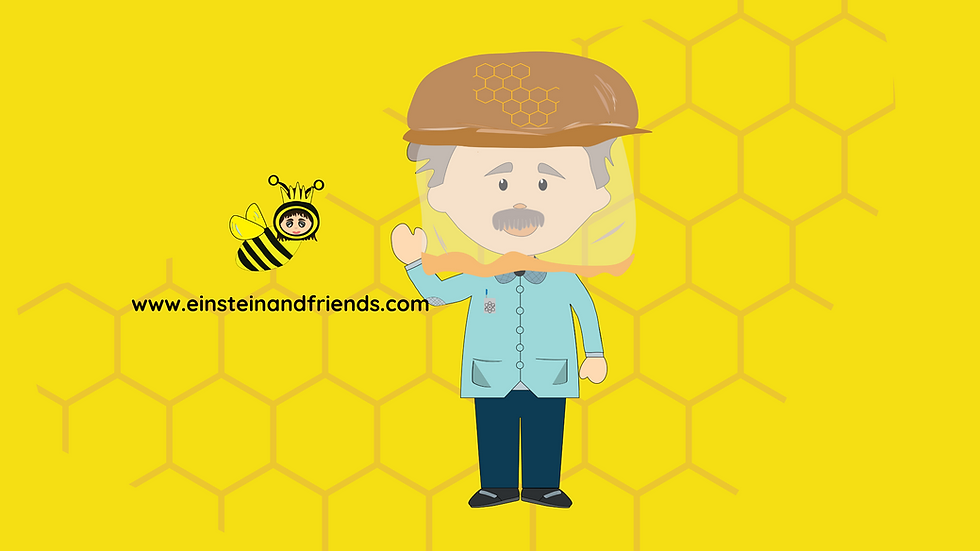How to make a compass: A Fun DIY Project for kids
- Einstein & Friends

- Feb 24
- 3 min read
Updated: Aug 6
Embarking on the journey of creating your own compass is more than just a fun activity; it's a gateway to understanding the wonders of science and the spirit of exploration. This hands-on project introduces young minds to fundamental scientific principles and ignites a passion for discovering the world around them.
Ready to become a young explorer? Let's create a simple compass with materials you can find at home!
Materials Needed:
A sewing needle
A small magnet
A piece of cork or foam
A bowl of water
Tape

A peek inside "Einstein's Fun Science Adventures 20 Experiments for Young Scientists" Children's book - Explaining DIY Compass
Steps:
Magnetize the Needle: Gently rub the needle with the magnet about 50 times, always in the same direction. This process aligns the needle's particles, turning it into a mini-magnet.
Prepare the Float: Attach the magnetized needle to the piece of cork or foam using tape, ensuring it can float freely.
Assemble the Compass: Place the cork or foam with the needle onto the surface of the water in the bowl. Watch as it slowly aligns itself, with one end pointing north!
By creating this homemade compass, you're stepping into the shoes of ancient explorers and scientists, discovering the wonders of Earth's magnetism firsthand. It's a fun and educational activity that sparks curiosity and a love for learning.
Why Compasses Matter Today
In our modern world, even with advanced technology, compasses remain essential. They serve as reliable tools for hikers, campers, and sailors, especially when electronic devices fail or batteries run out. Understanding how to use a compass fosters a deeper connection with nature and enhances our sense of direction. Moreover, learning about compasses helps us appreciate Earth's magnetic forces and the science behind navigation.
Connecting with Earth's Magnetic Mysteries
By constructing a compass, children delve into the concept of magnetism and Earth's magnetic field. They learn how our planet acts like a giant magnet, influencing the compass needle to point north. This tangible experience demystifies abstract scientific ideas, making them accessible and engaging. As they observe the needle aligning with Earth's magnetic pull, young explorers gain a profound appreciation for the invisible forces shaping our world.
Fostering Problem-Solving and Critical Thinking
The process of making a compass encourages problem-solving and critical thinking. Children must follow precise steps—magnetizing the needle, ensuring it floats correctly, and testing its accuracy. This trial-and-error approach teaches patience, resilience, and analytical skills. Encountering challenges along the way becomes an opportunity to develop solutions, fostering a mindset geared towards innovation and inquiry.
Inspiring Further Exploration
Creating a compass serves as a springboard for broader explorations. It can lead to activities like orienteering, where children use their handmade tool to navigate and explore outdoor spaces. This not only enhances their understanding of geography and spatial awareness but also instills a sense of adventure and self-reliance. Moreover, it opens the door to discussions about Earth's geography, the history of exploration, and the evolution of navigation tools over time.

Engaging in such projects nurtures a lifelong curiosity and a desire to learn, laying the foundation for future scientific endeavors and a deeper connection to the world we inhabit.
At Einstein & Friends, we're dedicated to sparking curiosity and fostering a love for learning in young minds. If you enjoyed this activity and want to discover more exciting science projects, interactive quizzes, and educational resources, we invite you to subscribe to our website.
Join our community of young explorers and stay updated with the latest adventures in science and discovery. Subscribe to Einstein & Friends
Together, let's embark on a journey of endless learning and fun!


Comments